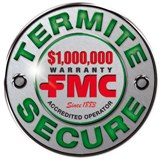Eflex Acredited Operators

Looking for information about Eflex, the termite control range developed by FMC? A termite infestation can be bad news to a home or property owner, who may find themselves facing a significant repair bill as a result of widespread termite damage that has gone unnoticed. Worse, these repairs aren’t covered by insurance.
While a termite infestation can be detected early by investing in regular pest inspections by a registered pest controller, inspections don’t prevent termites entering homes so many people may one day have to deal with the consequences of an infestation. Fortunately there are several approaches that can be taken when it comes to dealing with an established termite colony on your property. FMC’s Eflex products are designed to provide a comprehensive solution for termite eradication.
These products are certified and researched based, and are designed for use only by a licensed pest controller. The implementation of FMC’s termite control product line consists of several steps.
Termite Inspection
The first step entails a thorough inspection of the property and its surrounds for evidence of a termite infestation. Areas commonly affected by termites include untreated timber such as door frames and windowsills, and warm, moist areas of the garden, particularly those containing wooden sleepers or tree trunks and roots.
Termite Baiting
Your pest controller will then set up a bait station in any areas considered to be affected by termites. Bait stations are stations containing a ‘bait’ product that is designed to be appealing to termites. The product, however, is laced with a toxin that will eventually kill the termite that has ingested it. These toxins are slow-working, allowing the termite to return to the colony and contaminate other termites before death occurs. This increases the likelihood of colony reduction or eradication.
Following up
Your pest controller should conduct regular checks of the property to ensure that all termite affected areas have been identified, and to monitor levels of termite activity. This helps to control the existing termite population, as well as to reduce the likelihood of further damage caused by new termite infestations.
Consolidating
Colony death often occurs between two to six months after the baiting procedure. The exact amount of time between application and colony death depends on factors such as the take-up of the baiting product, and also the size of the colony. Larger, established colonies will take longer to be destroyed than smaller colonies. The pest controller may then suggest putting in place a ‘termite barrier’, which is designed to prevent re-infestation.
For more information about Eflex and how it can be used to treat a termite infestation, feel free to contact the team at A1 Pest control on 0417 251 911
Benefits
- Cost effective
- FMC One Million Dollar Manufacturer’s Warranty against termite damage
- Piece of mind
